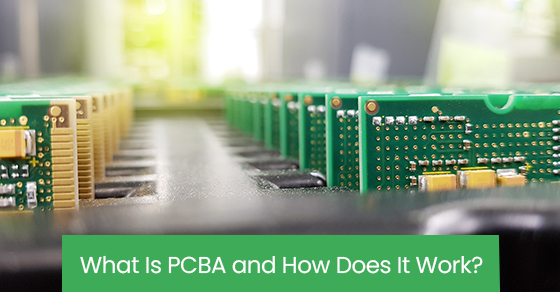What Is PCBA and How Does It Work?
A fundamental component of any modern type of electronic device is a printed circuit board (PCB). For an electronic device to function optimally, so does the PCB it contains. A vital part of ensuring that happens is making sure the printed circuit board assembly (PCBA) process goes smoothly.
Even the slightest issue that arises during the PCBA process could negatively impact a PCB’s functionality, and bigger issues could lead to a complete lack of functionality. Therefore, this process is important to perfect.
Although PCBA and PCB manufacturing often get mixed up, these are two different steps that must take place in the development of a PCB. In fact, PCBA comes after PCB manufacturing. In most cases, before PCBA can begin, the board itself must be manufactured, including all the layers and the creation of traces.
PCBA is essentially the process of bringing all the components from the manufacturing process together, adding some components and resistors, and creating a functioning PCB out of these elements.
What are the different approaches to PCBA?
When it comes to PCBA, the main differences in approach vary based on the type of technologies applied to enact this process, as there are generally several options to choose from. Each of these options has its own benefits. Sometimes, just one type of technology may be required, while other times, multiple types may come into play.
A few of the most common approaches to PCBA include surface mount technology (SMT) assembly, manual soldering, and the use of pick and place machines. Through-hole technology (THT) is another method that is often used, although it is sometimes used in tandem with SMT.
What steps are involved in the PCBA process?
There are a few different approaches to the PCBA process, which vary mostly based on the tools and technologies used to complete the assembly. Although there is a lot of room for variation in this process, it is still possible to outline some steps that typically occur throughout.
The following are some of the most important steps that generally get included in the PCBA process:
1. Solder paste
In a traditional PCBA process, the application of solder paste to the PCB is usually the first step. It is very important to accurately place the correct amount of paste onto each of the pads that require soldering. Although solder paste does not typically need to be applied with THT, it is required for SMT.
2. Component placement
The second step in the traditional PCBA process involves placing the components on the board, which can be done either manually or with the assistance of machinery. If a THT approach is taken, incredibly precise hand placements are required. For SMT, though, robotic systems are utilized for component placement, which is just as precise but faster.
3. Reflow
Traditionally, reflow is the next step, which involves the solder being melted and resolidified. As the board and its components all move through an oven, the solder is heated and liquefied.
Then, connections are formed before it is moved into a cooler, where the solder cools and hardens again. In THT, reflow is not required, although the board must undergo a thorough inspection to ensure component placement accuracy.
4. Through-hole part insertion
Traditionally, through-hole insertion is manually done at the next stage once the board has undergone a visual inspection. Soldering may also be done manually at this stage, although a wave-soldering method may be used for certain processes as well, such as the THT approach. This involves the entire board moving through liquid solder and then through coolers to solidify this solder.
5. Final inspection and cleaning
In the traditional PCBA process, the last step involves a final inspection of the board, the solder points, and the components to ensure that no issues are present. Following this inspection, the board, solder points, and components should also be cleaned to remove any debris or excess solder. After this, assembled PCBs may be packaged for distribution or further manufacturing.
How Circuits Central Can Help You Achieve Flawless PCBA
If you would like to develop top-quality PCBs and require assistance with the PCBA process or circuit board design in Toronto, Circuits Central can help guarantee you get the exact PCBs you need.
With over 25 years of experience in this industry, we understand the complexities of the PCB development process well, and we have put together a team of experts who have perfected their approach to each stage in this process. From the development of schematics and PCB layout designs to prototyping, PCBA, and post-manufacturing testing and development. Once we understand your needs regarding the PCB development and production process, we can offer innovative solutions that will meet and exceed them.
Through us, you can gain access to a flexible-by-design and reliable production facility that can handle the creation of various volumes and complexities of PCBs, as it is equipped with the latest and most advanced technologies in the industry.
You will also gain full access to our expertise, which is equally as valuable as we tackle every project that we are given with creativity and well-thought-out approaches that have repeatedly proven themselves to be reliable.
To ensure that all of our work is conducted with the highest possible quality, we also offer a wide range of PCB testing services in-house so that you can be confident in the PCBs you are leaving with.
For more information about how we can help you with circuit board design in Toronto or to learn more about how you can benefit from our other PCB assembly and manufacturing services, call Circuits Central at 1 (888) 602-7264 or contact us here.

